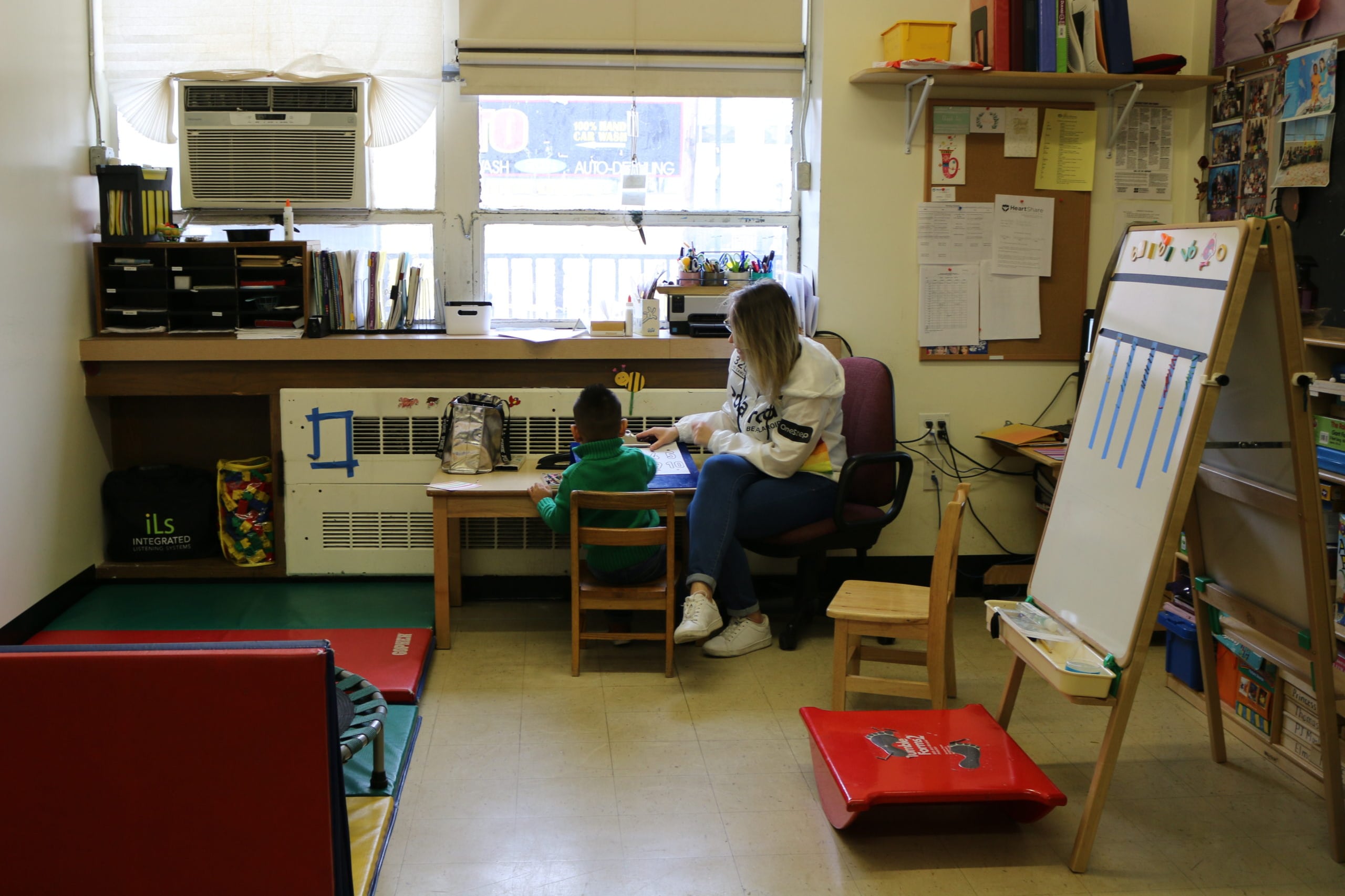Sign up for Chalkbeat’s free weekly newsletter to keep up with how public education is changing.
Tens of thousands of young children with developmental delays went without critical services early in the pandemic, a new report finds, suggesting many preschools and elementary schools are now serving students with greater needs.
Federal officials characterized the report’s findings as “disturbing” though not unexpected, given the disruptions COVID caused to places that typically refer children for these services, such as doctor’s offices, social service agencies, and child care programs.
Nationally, 77,000 fewer 3- and 4-year-olds received early childhood special education services in fall 2020, representing a steep 16% drop from the prior year, according to a report released Wednesday by the National Institute for Early Education Research at Rutgers University. Similarly, 63,000 fewer infants and toddlers received early intervention services during that time, a 15% decline.
The latest federal data from fall 2021 point to a rebound among children 3 and under getting early intervention and special education services, though the share of 4-year-olds who got that extra support dropped further.
Taken together, it’s a worrying indicator that many children who missed crucial services are entering school further behind in their skills — leaving already stressed early childhood and elementary educators to fill in the gaps.
“We know that there’s a very good likelihood that those children are going to show up either on the first day of preschool or on the first day of kindergarten needing more services than they otherwise would have needed,” said Katherine Neas, a deputy assistant secretary for the federal education department who helps oversee special education. “We really encourage states to look at what additional supports they can and should give students with disabilities.”
Early intervention services are provided to infants and toddlers who have developmental delays or are likely to develop them due to a physical or medical condition. In some states, kids also qualify if they’re at risk of a delay due to factors like premature birth, low birth weight, prenatal drug exposure, or an infection.
Children aged 3 to 5 with certain disabilities are eligible for early childhood special education. A little less than half of kids who get these services have a developmental delay, while just over a third have a speech or language disability. Another 1 in 10 have autism.
Services can include things like physical therapy, speech therapy, counseling, or sign language. Families also get important training and support that can make it easier for them to navigate the K-12 system. Getting help to kids early matters a lot: It can help improve school readiness and academic outcomes and reduce the need for special education later.
Of particular concern, the report’s authors said, was the “striking” 23% drop in Black children who received early childhood special education services, as those students were already much less likely than their peers to get this kind of extra help. By comparison, 18% fewer white children and 3% fewer Hispanic and Asian American children were placed in early childhood special education.
Meanwhile, Asian American infants and toddlers saw the biggest dip in early intervention services — down 21% — though the declines for the youngest children were more similar across race and ethnicity than they were for the older children.
Steven Barnett, a Rutgers professor who co-authored the report, said those racial disparities “are not just unfair, they’re harmful.”
“Early intervention and early childhood special education are vital supports for younger children with special needs and their families,” he said.
Many school districts across the country also struggled to identify K-12 students with disabilities during the pandemic, as some children learned remotely and school staff scrambled to process a backlog of evaluations.
There is some evidence that students who were not identified during this time were missed permanently. A team of researchers released a working paper this week analyzing data from Michigan schools that found significant dips in students being identified for special education in the early elementary grades during the 2020-21 school year, but not enough of a rebound the following year to suggest schools had caught many of the children who fell through the cracks earlier.
Kalyn Belsha is a national education reporter based in Chicago. Contact her at kbelsha@chalkbeat.org.






